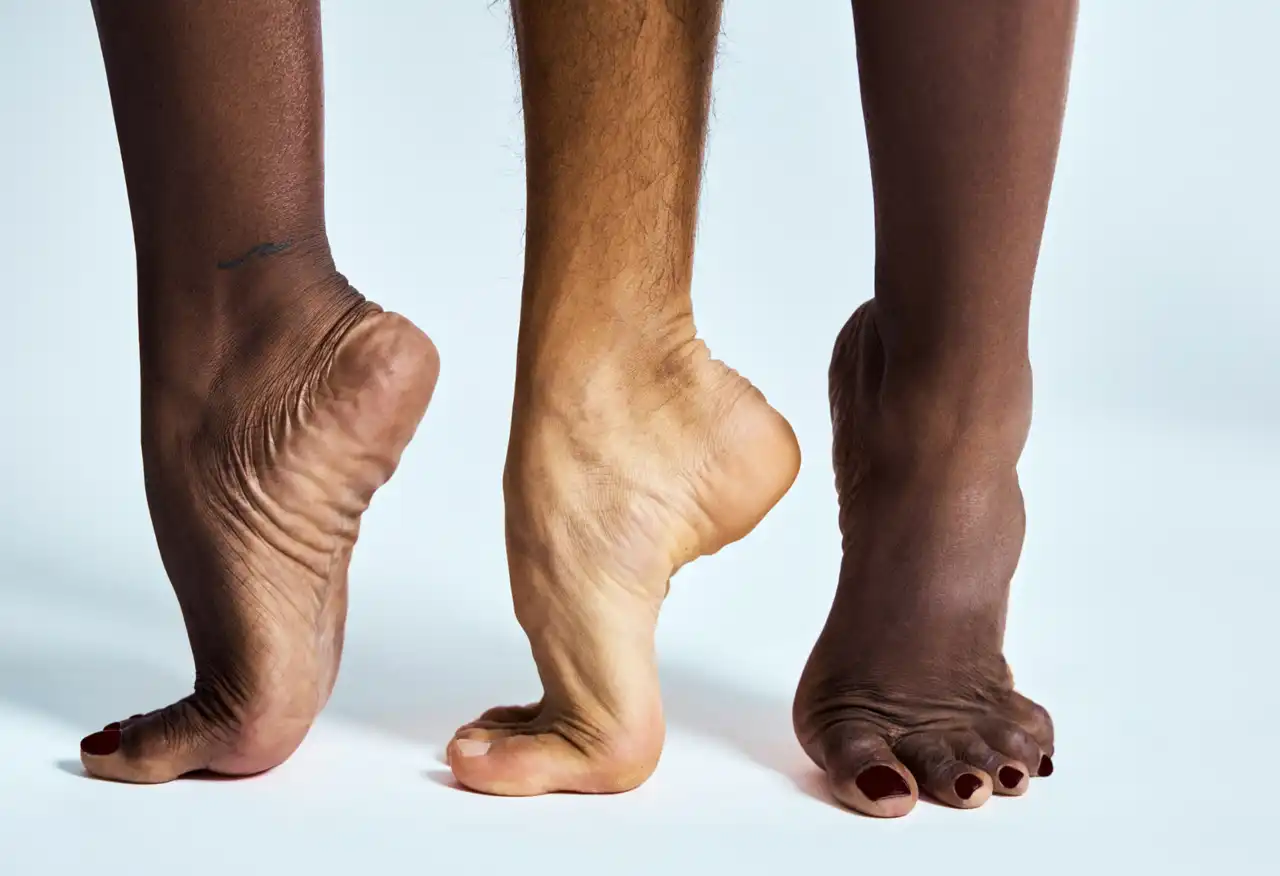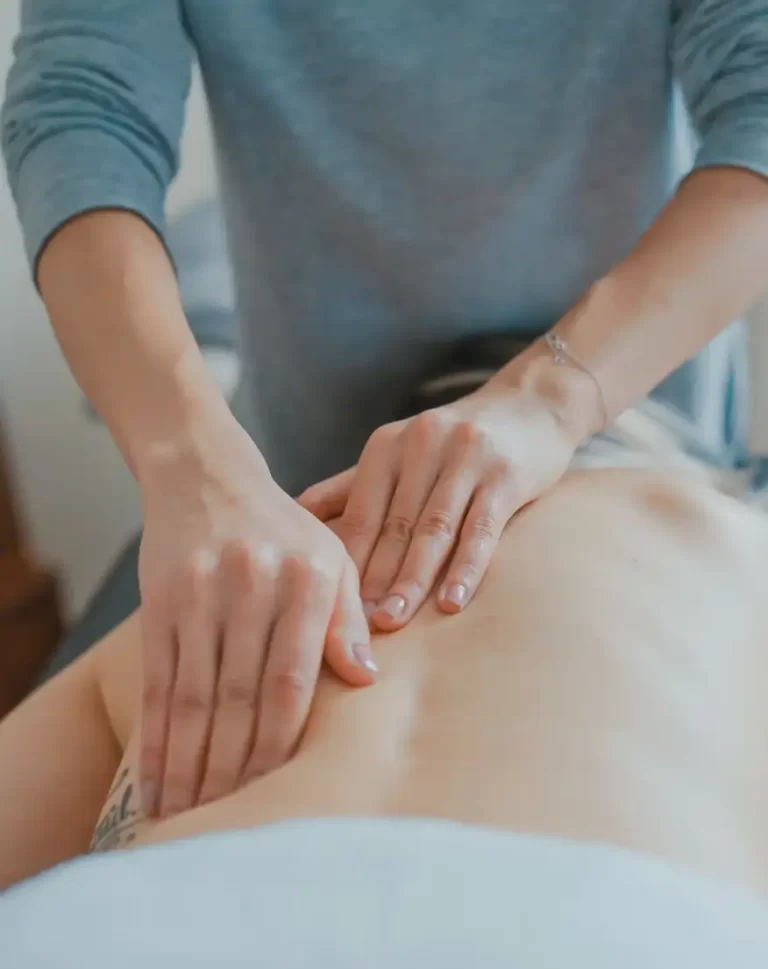Foot Pain at Work? Tips for Comfort and Support
Foot pain can greatly affect daily life, making simple tasks challenging and uncomfortable. Understanding the common causes of foot pain, such as injuries, arthritis, and conditions like plantar fasciitis, helps individuals seek appropriate treatment and relief. Many people might ignore their symptoms, thinking they will go away on their own, but this approach can lead to larger problems down the road.
Knowing when to consult a healthcare provider is crucial. If foot pain persists beyond two weeks or occurs suddenly after an injury, it is essential to get medical advice. Effective treatments are available that can not only alleviate pain but also improve mobility and overall quality of life.
Addressing foot pain early can prevent further complications and support a more active lifestyle. By taking proactive steps, individuals can find relief and return to the activities they enjoy without discomfort.
Understanding Foot Pain
Foot pain can stem from various factors, including anatomy and specific health conditions. Recognizing the structure of the foot and common causes can help address pain effectively.
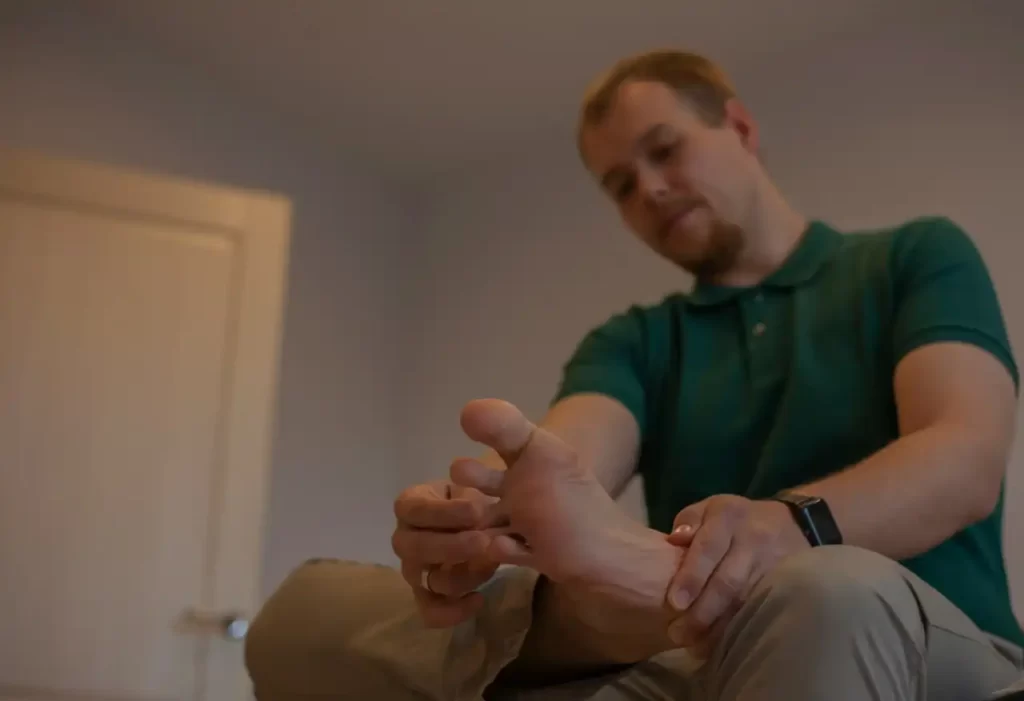
Anatomy of the Foot
The foot has 26 bones, 33 joints, and over 100 muscles, tendons, and ligaments, contributing to its complex structure. The bones include the tarsals, metatarsals, and phalanges. This design allows for movement and support while bearing weight.
Key parts of the foot include:
- Arch: Supports weight and absorbs impact.
- Heel: Provides stability in walking.
- Toes: Help balance and push off during movement.
Each part of the foot plays a crucial role in mobility. Understanding this anatomy helps in diagnosing and treating various foot pain issues.
Common Causes of Foot Pain
Foot pain can arise from many reasons, often linked to lifestyle, injuries, or health problems.
Some frequent causes are:
- Injury: Sprains, fractures, and tendonitis can occur from accidents or overuse.
- Improper Footwear: Shoes that don’t fit correctly can lead to pain.
- Health Conditions: Conditions like arthritis, diabetes, and plantar fasciitis often cause discomfort.
Standing for long periods, aging, and being overweight also contribute to foot pain. Recognizing these causes is essential for effective treatment.
Symptom Overview
Symptoms of foot pain vary greatly depending on the cause. Individuals might experience:
- Sharp Pain: Often felt with specific movements or pressure.
- Dull Ache: Can be constant and worsens with activity.
- Swelling: Common in areas affected by injury or excess strain.

Additionally, symptoms may include tingling or numbness, particularly if nerves are affected. Identifying these symptoms helps tailor appropriate treatments. Seek medical attention if pain persists or interferes with daily activities.
Diagnosing Foot Pain
Diagnosing foot pain involves a thorough assessment to determine the underlying cause. This process typically includes a physical examination, medical imaging, and laboratory tests to guide treatment.
Physical Examination
During a physical examination, a healthcare professional evaluates the foot’s structure, range of motion, and any visible signs of injury. They will ask questions about the pain’s location, intensity, and duration. This helps identify specific conditions like plantar fasciitis or tendonitis.
The practitioner may also assess balance and gait. Common methods include observing how the patient walks and performing specific movements that can reproduce the pain. Tenderness, swelling, or abnormalities can provide significant clues.
Additionally, checking for misalignment or issues in the feet can help understand the pain’s origin. This step is vital for establishing an effective treatment plan.
Medical Imaging
Medical imaging techniques are often necessary to gain more insight into foot pain. X-rays are commonly used to identify fractures, bone spurs, or arthritis-related changes. They provide a clear view of the bone structure.
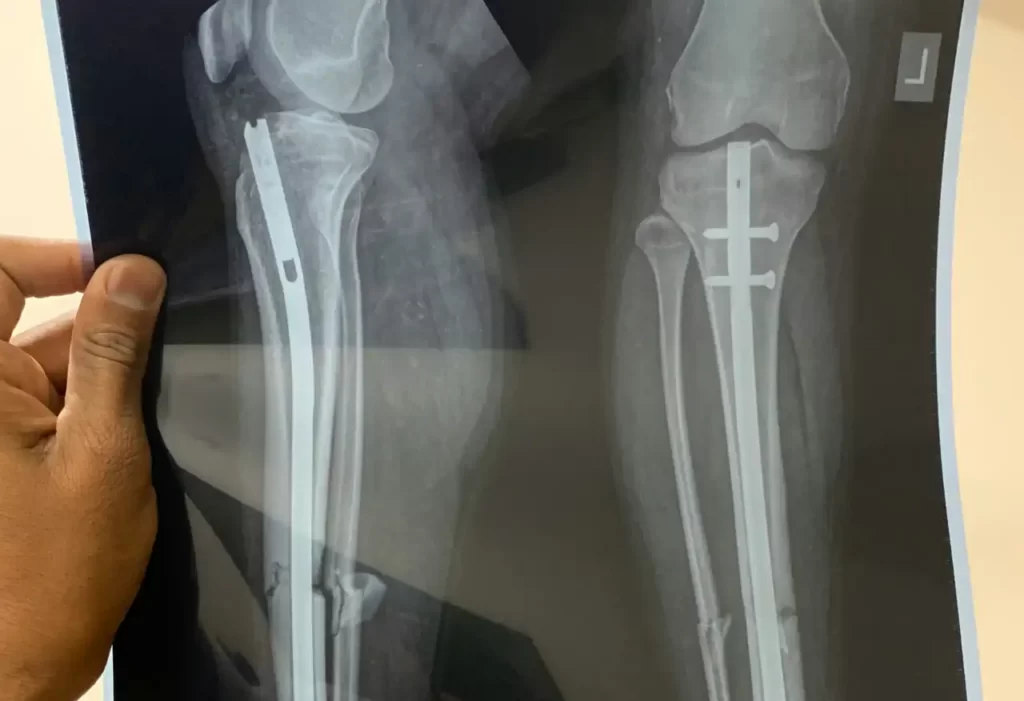
MRI scans may be ordered if soft tissue damage, like ligament tears or inflammation, is suspected. This imaging method offers detailed images of the muscles, tendons, and ligaments around the foot.
CT scans can also be useful for complex foot injuries, providing cross-sectional images for a better diagnosis. These imaging techniques help ensure appropriate treatment options are selected based on the exact condition.
Laboratory Tests
In certain cases, laboratory tests may be ordered to help diagnose foot pain. Blood tests can check for signs of inflammatory conditions like rheumatoid arthritis or gout. These tests can reveal important markers of systemic issues that may affect the feet.
For suspected infections, a sample of fluid may be taken for laboratory analysis. This helps identify any bacterial or fungal infections that could be causing pain.
Last, a healthcare provider might consider tests for diabetes or other metabolic conditions that can impact foot health. Understanding these factors aids in creating a comprehensive treatment plan tailored to the patient’s needs.
Treatment Options
Foot pain can be managed through a variety of treatment options. These include home remedies, over-the-counter medications, therapies, and surgical interventions, all of which can be tailored to fit the individual’s needs.
Home Remedies
Home remedies are often the first line of defense against foot pain. Simple practices can provide relief and aid recovery.
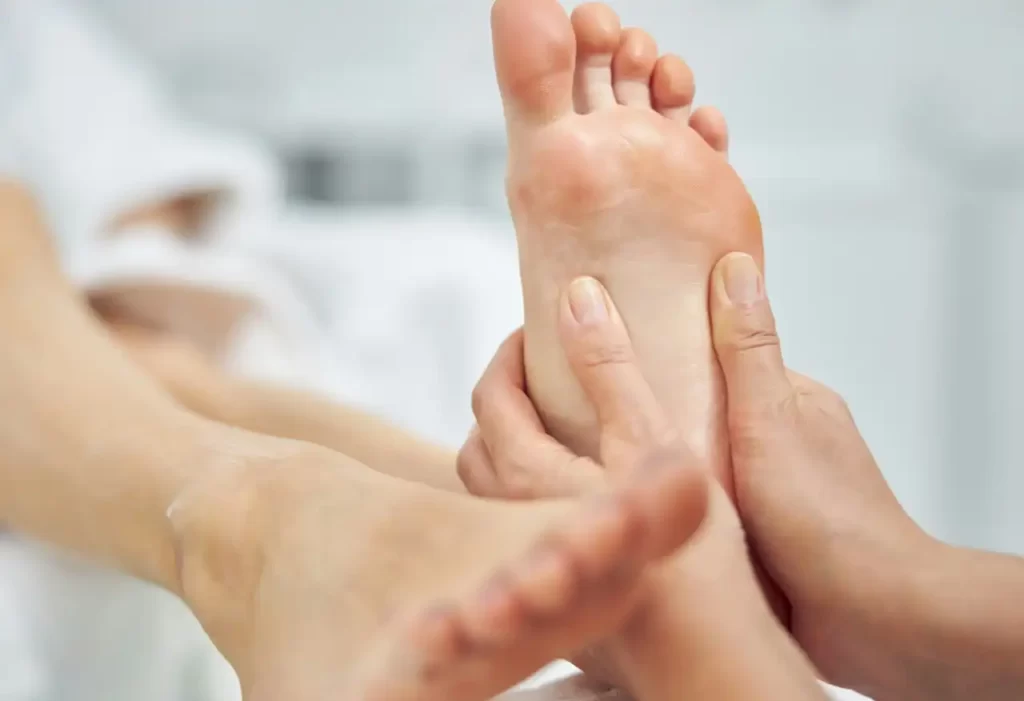
- Rest: Taking breaks can help reduce pain and stress on the foot.
- Ice Therapy: Applying an ice pack for 15-20 minutes can reduce swelling.
- Elevation: Keeping the foot elevated helps decrease inflammation.
- Stretching: Gentle stretching exercises for the feet and calves can improve flexibility and relieve tension.
- Footwear: Wearing supportive shoes can prevent further pain.
These treatments can often be done at home and do not require professional help, making them accessible for most individuals.
Medications
Over-the-counter medications are effective for managing foot pain. Some common options include:
- NSAIDs: Non-steroidal anti-inflammatory drugs, such as ibuprofen or naproxen, help reduce inflammation and relieve pain.
- Acetaminophen: This can help manage mild pain without the anti-inflammatory effects.
- Topical Analgesics: Creams or gels containing menthol or capsaicin can provide temporary relief when applied directly to the painful area.
It’s vital to follow the recommended dosage and consult a healthcare provider if pain persists or intensifies.
Therapies
Various therapies can assist in alleviating foot pain and promoting healing. They include:
- Physical Therapy: A physical therapist can design a tailored exercise program to strengthen the foot and improve mobility.
- Massage Therapy: Professional massage can relieve tension and improve blood flow in the feet.
- Orthotics: Custom or over-the-counter shoe inserts can provide support and correct imbalances.
- Ultrasound Therapy: This method uses sound waves to promote healing and reduce pain.
These therapeutic options can offer substantial benefits for those suffering from persistent foot pain.
Surgical Interventions
In some cases, surgical interventions may be necessary, especially for severe conditions. Common procedures involve:
- Bunion Surgery: Removing the bony bump and realigning the toe can provide significant relief.
- Plantar Fasciitis Release: Surgical release of the plantar fascia may be considered when other treatments fail.
- Achilles Tendon Repair: For significant tears or ruptures, surgical repair can restore function.
Surgical options are typically considered after conservative treatments have not been successful. It is crucial to consult a specialist to evaluate the need for surgery based on individual circumstances.
Preventing Foot Pain
Preventing foot pain involves choosing the right footwear, making lifestyle changes, and engaging in specific exercises. Each of these areas plays a crucial role in maintaining foot health and comfort.
Footwear Recommendations
Choosing the right shoes is one of the most effective ways to prevent foot pain. Proper footwear should provide good arch support and a comfortable fit. Shoes should be made of breathable materials to reduce moisture. Consider the following when selecting shoes:
- Support: Look for shoes with cushioning that adequately supports the arch.
- Fit: Ensuring a snug fit without being too tight is essential. There should be enough space for the toes to move.
- Purpose: Different activities require specific types of shoes. Running shoes differ from walking shoes and dress shoes.
- Condition: Regularly check shoes for wear and replace them as needed to maintain support and cushion.
Lifestyle Modifications
Lifestyle choices have a significant impact on foot health. Simple changes can reduce the risk of foot pain. Here are some important modifications to consider:
- Weight Management: Maintaining a healthy weight helps reduce pressure on the feet. Extra weight can increase the risk of foot pain.
- Activity Level: Engaging in low-impact activities, such as swimming or cycling, can keep feet healthy without excessive strain.
- Stretching: Regular stretching of the calves and feet can improve flexibility and reduce tension that leads to pain.
- Foot Hygiene: Keeping feet clean and dry prevents skin issues that can lead to pain or discomfort.
Exercise and Strengthening
Regular exercise can enhance foot strength, flexibility, and balance. Simple exercises target specific muscles in the feet and can help in prevention. Important exercises include:
- Calf Raises: Stand on the edge of a step and raise the heels. This strengthens calf muscles and increases ankle flexibility.
- Toe Stretch: Sit and extend the toes, holding for a few seconds. This helps increase flexibility in the toes.
- Foot Roll: Use a tennis ball to roll under the arch of the foot. This helps relieve tension and improve circulation.
- Resistance Training: Use resistance bands to perform exercises that strengthen the foot’s arches.
Implementing these recommendations can greatly reduce the likelihood of experiencing foot pain and contribute to overall foot health.
When to Seek Medical Help
Foot pain can be common, but certain signs indicate the need for medical attention. Recognizing these warning signs and knowing when to see a specialist can help prevent further injury and promote healing.
Warning Signs
Some symptoms signal the need for a doctor’s visit. These may include:
- Severe Pain: Intense pain that limits mobility or daily activities.
- Swelling or Inflammation: Persistent swelling that does not improve with rest or ice.
- Changes in Color or Temperature: Redness or warmth in the foot could point to infection.
- Numbness or Tingling: These sensations may indicate nerve damage or other serious conditions.
If foot pain lasts more than a few days without improvement, it is crucial to consult a healthcare provider. Conditions like tendinitis or fractures are best diagnosed early.
Referral to a Specialist
In some cases, a primary care doctor may recommend seeing a specialist, such as a podiatrist. This referral is appropriate when:
- Chronic Pain: Pain that persists or worsens despite treatment.
- Specific Conditions: Diseases like diabetes or arthritis that can complicate foot health.
- Unusual Symptoms: Signs of infection, bone deformities, or severe injuries.
A specialist can provide targeted treatments such as custom orthotics or advanced imaging to diagnose issues accurately. Early intervention from a professional can lead to more effective recovery plans and better long-term outcomes.
Complementary Therapies
Complementary therapies can play an important role in managing foot pain. Various methods focus on relieving discomfort, improving mobility, and enhancing overall well-being. Below are a few therapies that may help alleviate foot pain.
Acupuncture
Acupuncture involves inserting thin needles into specific points on the body to relieve pain. This therapy is based on traditional Chinese medicine, which believes that energy flows along pathways called meridians.
Research shows that acupuncture can help reduce pain and inflammation in the feet. It may be particularly effective for conditions like plantar fasciitis and general foot pain.
Patients typically report fewer episodes of pain and improved function after treatment. The number of sessions needed varies, but many benefit from regular appointments.
Massage Therapy
Massage therapy is another effective option for managing foot pain. It involves manipulating soft tissues to promote relaxation and relieve tension.
Therapists often focus on the feet, calves, and surrounding areas to encourage blood flow and reduce muscle tightness. Techniques like deep tissue and reflexology are particularly beneficial for foot-related issues.
Patients often find that massage therapy reduces stress and enhances flexibility. Regular sessions can maintain the benefits, providing long-term relief from discomfort.
Chiropractic Care
Chiropractic care can help address foot pain caused by misalignment of the spine or joints. Chiropractors use hands-on adjustments to improve alignment and function.
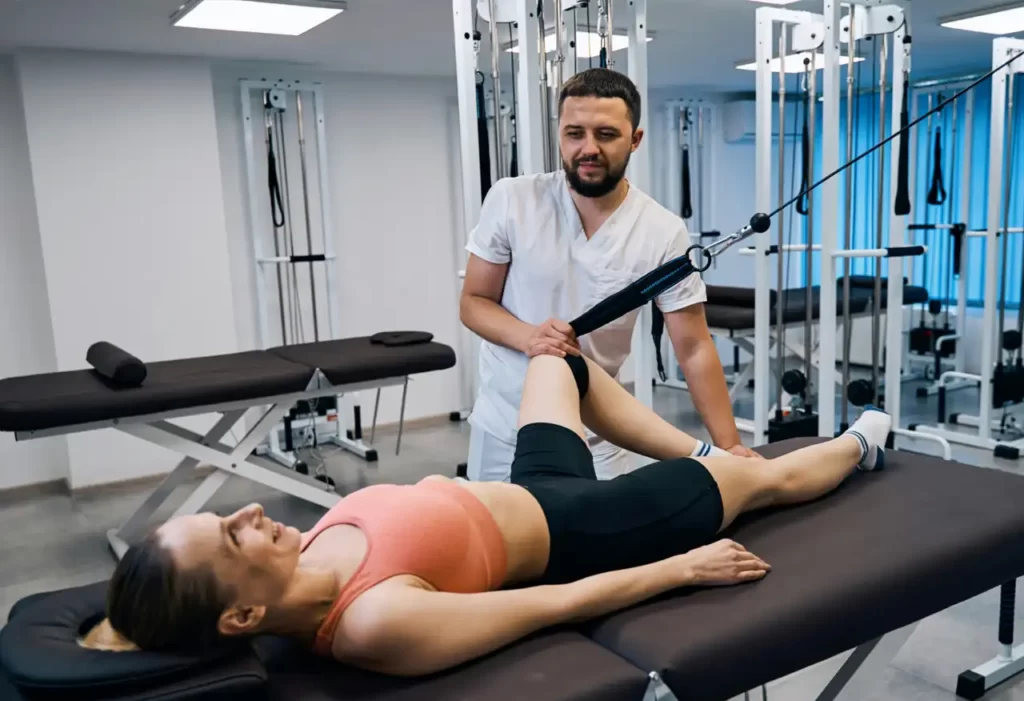
They evaluate how foot structures relate to the rest of the body. By addressing issues in the spine and pelvis, they can help alleviate pain in the feet.
Treatment may include exercises and stretches to strengthen foot muscles and improve balance. Many patients find that chiropractic adjustments lead to long-term relief and better mobility.
Recovery and Rehabilitation
Recovery from foot pain requires a structured approach that includes proper post-treatment care, physical therapy, and an understanding of the recovery timeline. Each of these aspects plays a crucial role in ensuring effective healing and returning to everyday activities.
Post-Treatment Care
After treatment for foot pain, either through surgery or conservative measures, post-treatment care is essential. This includes keeping the affected area clean and dry to prevent infection. Patients should follow their doctor’s advice on when to start weight-bearing activities.
Key aspects of post-treatment care:
- Rest: Allow the foot to heal by minimizing strain.
- Elevation: Keep the foot elevated to reduce swelling.
- Ice: Apply ice packs for 15-20 minutes several times a day.
It’s important to monitor for any signs of complications, such as increased pain or swelling, and to contact a healthcare provider if these occur.
Physical Therapy
Physical therapy is crucial in restoring strength and flexibility in the foot after an injury or surgery. A physical therapist will design a personalized exercise program.
Common exercises may include:
- Range-of-motion exercises: Help in regaining mobility.
- Strengthening exercises: Target specific muscles to improve stability.
- Balance training: Enhance coordination and reduce the risk of future injuries.
Patients should aim to attend regular sessions and practice assigned exercises at home. This commitment significantly increases recovery effectiveness.
Recovery Timeline
Understanding the recovery timeline can help set realistic expectations. The duration varies based on the injury severity, age, and individual health factors.
General timelines include:
- Mild injuries: 1-3 weeks for minor sprains or strains.
- Moderate injuries: 3-6 weeks for more serious sprains or fractures.
- Severe injuries: Several months for injuries requiring surgery.
Communication with healthcare providers throughout the process is essential to adjust timelines based on recovery progress.
Frequently Asked Questions
Foot pain can arise from various causes, and understanding common concerns can help manage discomfort. Here are key questions related to foot pain along with their respective answers.
How can I relieve pain on the bottom of my foot?
To relieve pain on the bottom of the foot, rest is crucial. Icing the affected area for 15 to 20 minutes several times a day can reduce swelling. Stretching exercises may also help ease tightness, and proper footwear with good arch support is important for long-term relief.
What are the different types of foot pain and their potential causes?
Foot pain can vary significantly. Common types include pain from conditions like plantar fasciitis, which affects the heel, and metatarsalgia, which causes pain in the ball of the foot. Other possibilities include pain from injuries, arthritis, or conditions like Achilles tendinitis.
How do I know if my foot pain is serious enough to see a doctor?
Signs that foot pain may require medical attention include persistent pain lasting more than a few days, swelling, bruising, or difficulty walking. If the pain is accompanied by numbness or tingling, it is advisable to seek professional evaluation.
What are the most effective treatments for sudden foot pain without injury?
For sudden foot pain without a clear injury, rest and ice are usually effective initial treatments. Over-the-counter pain relievers like ibuprofen or naproxen may help. If the pain persists, using supportive footwear can also aid recovery.
What is considered the most painful foot condition?
Plantar fasciitis is often considered one of the most painful foot conditions. It typically causes sharp heel pain, especially during the first steps in the morning. Other painful conditions include gout and certain types of fractures.
Why might the sides and top of my feet hurt?
Pain in the sides and top of the feet can be due to several factors. Conditions like peroneal tendonitis or stress fractures can cause side pain. Issues such as extensor tendonitis or even shoes that don’t fit properly may lead to pain on the top of the foot.

